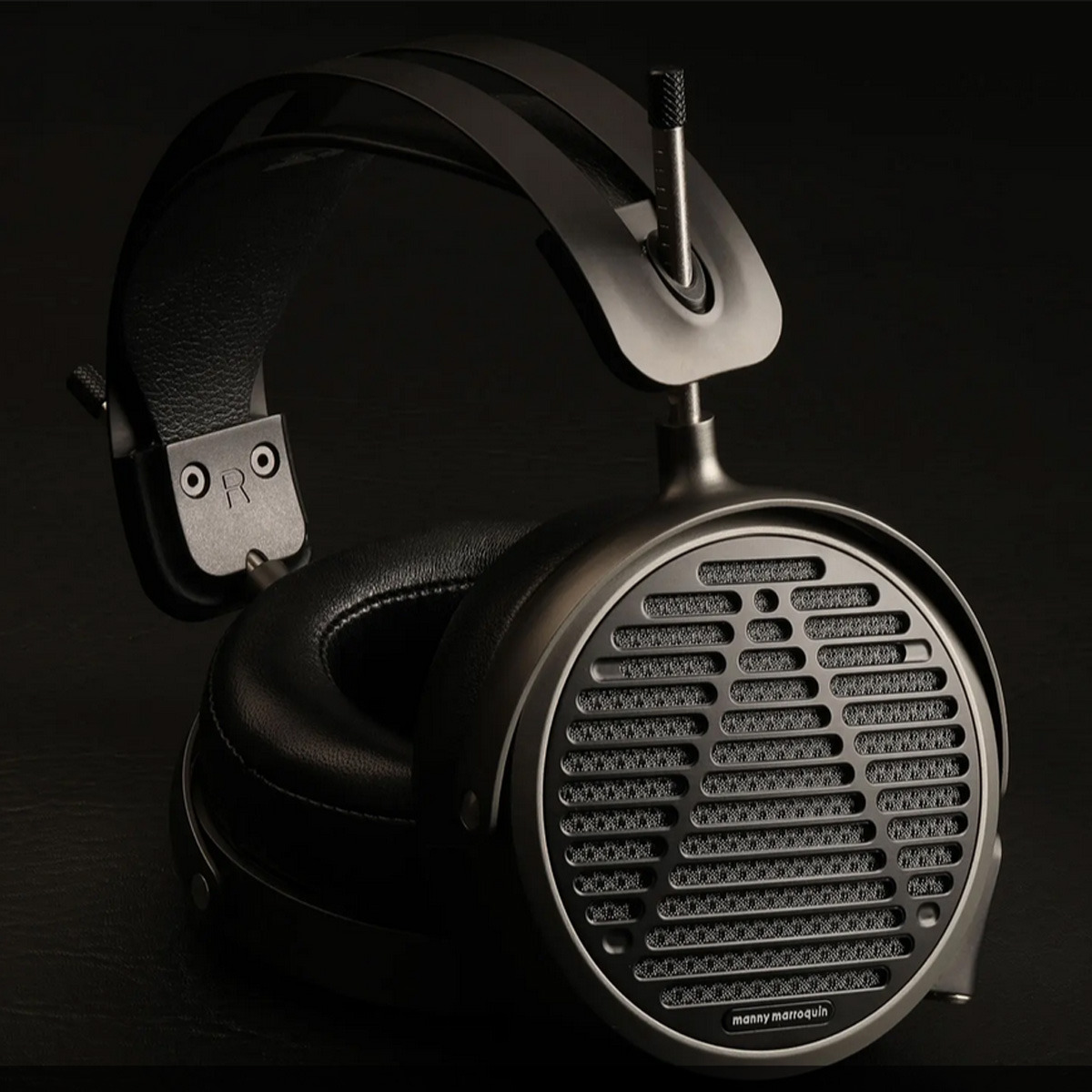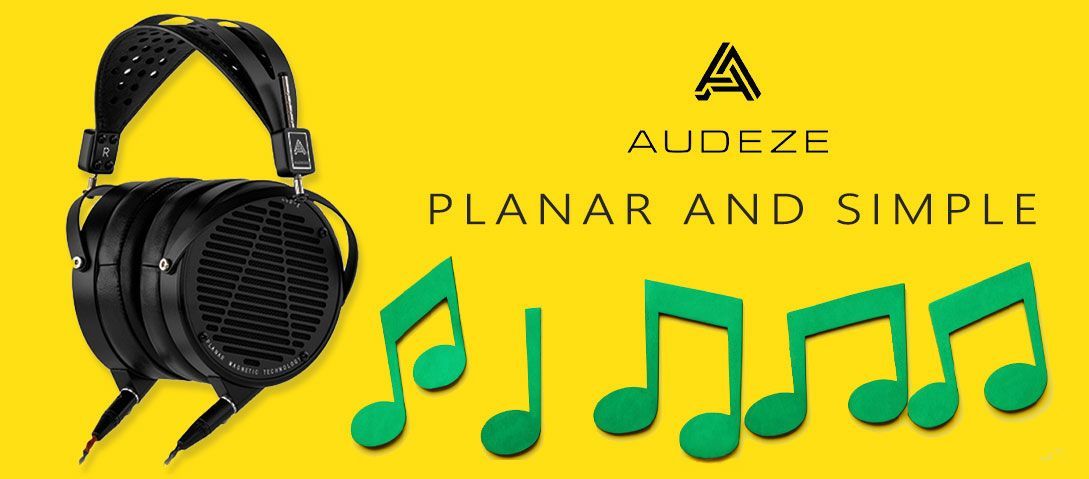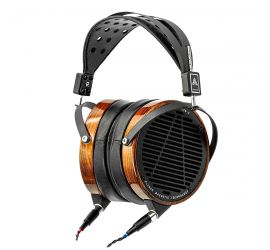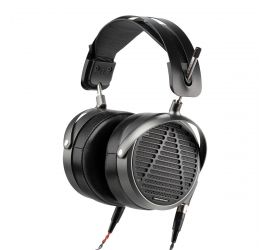Introduction: Getting their heads together
Just as Audeze – the 2008-founded audio-tech firm – aims to clarify our music, we will clarify the ambiguous pronunciation of their brand's name. It's o-duh-see, as in 2001: A Space Odyssey, as in, "Just what do you think you're doing, Dave?"
In a remote garage in California, legend has it that beneath a movie poster for the above-named, acclaimed sci-fi thriller, Audeze's founders looked up at the image to behold their inspiration for adapting NASA's tech into their high-performance audio products.
The Product Lineup: Planar and simple
KS distribution's Kiri and John brought us four of Audeze's best-selling models: LCD-2 Classic - A redux of the originals, LCD-X – 'The Professionals Choice', LCD-XC – a closed-back redesign of the former and the MM-500 - a high-performance professional tool.



Build and Comfort: Durable Yet Distinctive
The Audeze design approach builds around planar magnetic drivers. A more expensive technology than the more common cone drivers, planar diaphragms resonate evenly across a highly flexible large surface area. The principles Audeze applies to the planar system produce extremely well-balanced sound owing to large, flexible 'Ultra-Thin UniforceTM' diaphragms with the voice coils actually printed directly on them, giving even resistance across the frequency spectrum. So Audeze headphones will be less picky with amplification, making them adaptable to your high-end headphone amplifier or even your mobile device (not that you are likely to take a set of these cans out and about).
The range does have some heft, and the capsules are indeed sizable - built to house the high flexibility and large surface area diaphragms. This aims to achieve deep controlled bass and overall dynamics. The Audeze designs attempt to offset their bulk with big, fat, cosy ear pads while the suspension headband evenly spreads the load around your head. You can tell they are built to last and are easily serviced, unlike many other cans on the market.
Audeze proudly employs humans to hand-assemble every unit in the range above (although HAL 9000 may have its contentions: "No 9000 computer has ever made a mistake or distorted information."). Somehow, we are confident Audeze's personnel are more reliable than A Space Odyssey's discombobulated computer.
Performance Test: The low-end theory
We jacked all four models into assorted amplification to understand the diverse use cases that the Audeze range is capable of. The Astel&Kern ACRO CA1000 was our reference headphone amplifier, and the modest built-in headphone socket on a Heed Elixir integrated amp evaluated more general use. We also had a Chord Hugo2 available to avoid scuffling over the A&K and, for completeness, even our mobile phones.
We all had our favourite songs (as did HAL: "If you'd like, I could sing it for you. It's called 'Daisy'"), but no thanks, HAL, this reviewer chose Sade's equally eerie Haunt Me and Ane Brun's These Days – deep, expansive recordings to coax the best from Audeze's UniforceTM Ultra-thin drivers.
Our first comparison was between the Reference Series open and closed models – LCD X (open) and LCD XC (closed). Planar magnetic drivers, you may know, are capable of deep, well-defined bass and balanced overall presentation, albeit at the expense of punch and 'air'. And open-back headphones give a spacious, light touch. With this in mind, it was intriguing to hear the closed-design LCD XC perform with such a balanced, immersive sound. While not as spacious as the open-design LCD X, they're certainly less coloured than common dynamic cone drivers, giving listeners a more honest, expansive sound. Although closed-back designs do not leak sound, attracting unwanted attention, the sheer size of these cans would. But Audeze has their interests in the professional world, not commuters. The closed-back versions are ideal where sound leakage is detrimental; for example, a musician monitoring a mix while recording their part in a studio live room. The open-back versions are the perfect choice for engineers in the control room. That said, either of the above is an excellent choice for home listening. The point is the LCD XC can still deliver that expansive experience without inflicting your diverse musical preferences on the people you care about.
The Manny Marroquin endorsed (hence their name) MM-500, which was the set we impatiently queued to hear. Manny is a Grammy-winning engineer listening to mixes over long, important sessions. Looking through the artists, this guy has worked with, we find contemporary producers of some of our choice test tracks: Lana Del Rey, The Weeknd, and FKA Twigs – deeply emotive music.
The first impression of these signature model headphones was significantly less weight (though still not exactly a portable weight). This is partly due to the aluminium structure (adapted from their flagship LCD 5) and partly to the more powerful FluxorTM magnets' ability to accelerate and control the smaller, stiffer transducers without using larger magnets. The result is lighter headphones with better resolution, transparency and efficiency.
The technology seemed to work. On Sade's track was a hauntingly beautiful piano line – all gloss and shine – separated cleanly from the nylon strings of the guitar's well-defined motif; her delicate vocal tone conveyed with poise. The tom drum flurry throughout Ane Brun's These Days was wonderfully unsmeared with pinpoint transient detail.
Finally, we gave the LCD 2 Classic a quick listen. After all the excitement from the above models, they were still a fun experience, although the difference was obvious, especially in the upper mid-range. They are nearly £1000 cheaper, after all.
Conclusion: For your ears only
Although planar magnetics are considerably less punchy than traditional dynamic cones, Audeze has positioned itself at this technology's forefront. We had the privilege of testing four of the most popular models. One thing they all had in common – aside from the bulky, stay-indoors-with-your-music design – was that fluid, full-bodied sound with bass capability and intimate presentation.
Given that Audeze flaunts its professional studio credentials all over its website, be assured its portfolio is just as welcome for home users. Being 18-20 Ohm, the low impedance models are useable with practically all your devices. Even the 70 Ohm LCD 2 Classic are driven well enough by a laptop or good DAP (digital audio player). While choosing high-quality headphones can often be a headache: "Dave, my mind is going. I can feel it. I can feel it. My mind is going." Don't worry HAL, Audeze has models for all discerning listeners.






